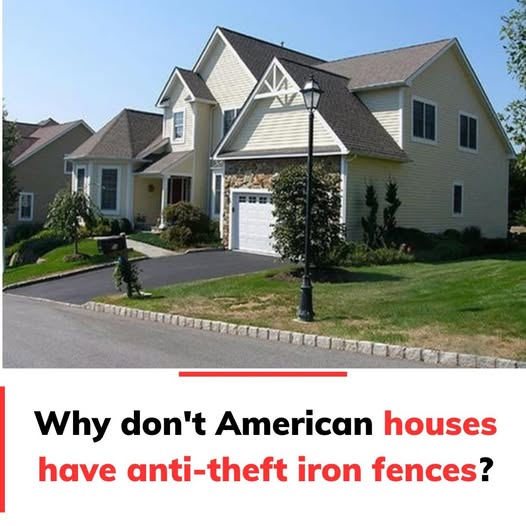ADVERTISEMENT
Why Don’t American Houses Have Anti-Theft Iron Fences?
In many parts of the world, iron fences designed to deter thieves are a common sight around homes, businesses, and even public properties. These sturdy, imposing barriers are often associated with security, giving property owners a sense of safety and peace of mind. However, in the United States, it’s relatively uncommon to see such anti-theft iron fences surrounding homes. Why is this the case? Let’s explore the cultural, practical, and legal factors that shape the approach to home security in the U.S. and why iron fences aren’t as prevalent as they might be elsewhere.
1. Cultural Preferences for Aesthetic Appeal
One of the key reasons why anti-theft iron fences are not as common in American homes is aesthetic preferences. In many cultures, particularly in Europe and parts of Africa, wrought-iron fences are often seen as a traditional and functional part of a home’s exterior. They’re considered both a deterrent to crime and a visual feature that enhances the property’s beauty.
In the United States, however, there is a greater emphasis on the open, welcoming nature of homes. Americans often prioritize curb appeal and a friendly, inviting atmosphere. High, wrought-iron fences can create a fortress-like appearance, which can feel intimidating or isolating. Many homeowners prefer fences or walls that are less imposing—perhaps wood, vinyl, or even chain link—because they blend in more easily with the surrounding neighborhood and maintain a sense of openness.
2. The Role of Technology in Home Security
Another reason anti-theft iron fences aren’t as common in the U.S. is the prevalence of modern security technology. With advancements in alarm systems, motion sensors, security cameras, and smart home devices, many homeowners in the U.S. feel that these high-tech solutions are sufficient to protect their properties.
Security technology has become much more accessible and affordable over the years, and many American homeowners prefer to invest in digital security measures rather than physical barriers like iron fences. These systems can often cover a wider range of potential threats (from burglary to fire) and offer real-time monitoring, giving homeowners the peace of mind that an iron fence might not provide.
3. The Legal Landscape and Zoning Restrictions
In the United States, local zoning laws and regulations can make it more difficult to install high fences, especially those made of iron. Many municipalities have specific height restrictions for fences and walls, particularly in residential areas. These regulations are designed to maintain the aesthetic uniformity of neighborhoods, preserve sightlines for traffic, and ensure that fences do not obstruct the view of the surrounding environment.
Additionally, some areas might prohibit the installation of barriers that are perceived as too intimidating or that might create a “fortress” effect. As a result, residents may not be legally allowed to build anti-theft iron fences, and instead, opt for more subtle forms of security like security cameras or landscaping.
4. Economic Considerations
Iron fences are not only heavy and visually imposing but can also be expensive to install and maintain. Wrought iron requires regular upkeep, including painting to prevent rust and corrosion, especially in areas with high humidity or salty air. This can be a significant ongoing cost that many homeowners in the U.S. are unwilling to bear.
